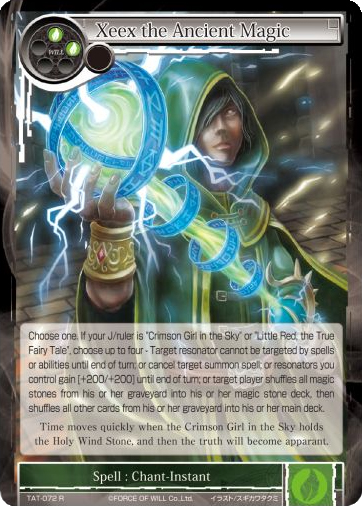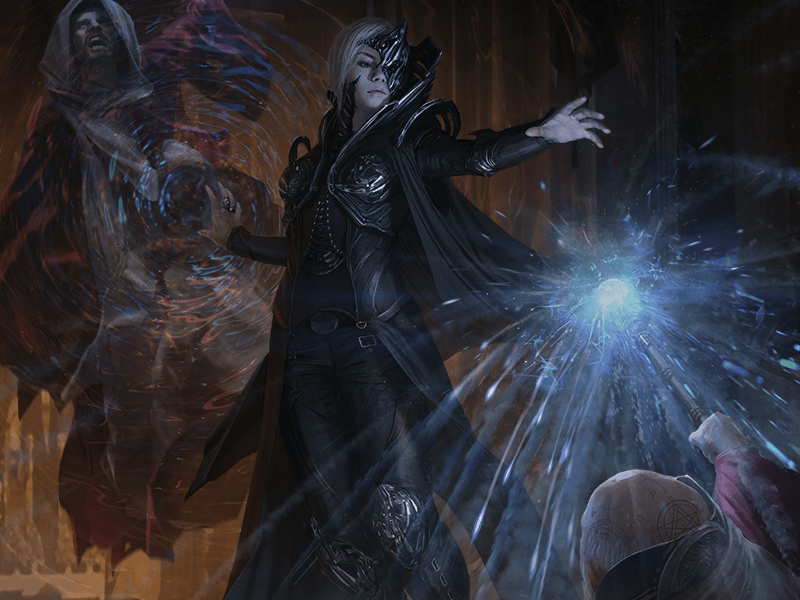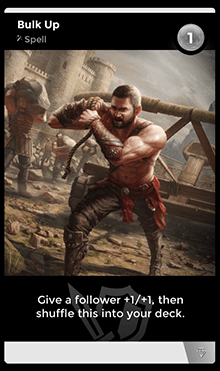Adapting Other CCG Mechanics into Zems, Pt. 1
As a card game designer, it’s my duty to stay up to date on other card games and to bring some of their funnest mechanics into Zems.
Disclaimer: The mechanics and adaptations mentioned in this post are not guaranteed to make it into Zems, but I hope to incorporate them someday.
Unfun to Acceptable
Many card games have unfun elements deemed ‘necessary evils’ by their communities. However, if you look at the recent design decisions in many CCGs (their latest sets – especially Magic sets), many of these are clearly avoided. Below, I list three of these ‘unfun’ mechanics while presenting an ‘acceptable’ alternative.
Hexproof
The core idea behind hexproof is to play a creature the opponent cannot interact with and build it up with tons of buffs until it’s an unstoppable monster that just wins the game.
Â
The cards above are just one example of a Hexproof setup. There are a large number of enchantments (buffs) that can bring a humble 1/1 hexproof to unstoppable levels and it would be impractical for me to list them all.
The reason Hexproof is unfun is because it doesn’t allow players to interact with each other. One player has an untouchable guy with buffs while the other player is staring at unusable interaction cards in hand. One player is clearly having fun over the expense of the other, and this is true even if the Hexproof player is losing – the very nature of the deck’s design prevents it from running cards that can swing a board state (a common trend in many recent top tier standard Magic decks) because almost all of its cards are either Hexproof creatures or buffs.
Zems will NOT support a core Hexproof strategy. We may have cards that cannot be targeted, but all of them will cost more than 1 and cannot be a core part of deck design. Note that players only see four cards at the beginning of a game, so it is very difficult to mulligan for this kind of strategy in the first place. The strategy behind Hexproof, however, is actually not about preventing interaction. It’s about creating a one man army, and that is something we will support. In Zems, a one-man-army buff strategy will revolve around buffing the player’s Hero. This is a risk vs. reward tradeoff since the Hero unit is also the player’s win/loss condition – if it dies, the player loses the game.
Denial
This strategy is also known as permission.
Any ability that says ‘Certain cards cannot be played’ is a literal shutdown effect that keeps cards dead in your opponent’s hand and many consider this mechanic to be unfun because not being able to play cards is unfun. We won’t be supporting this. However, we do acknowledge that interesting situations can be created by making certain types of cards more difficult to play without preventing them from being used entirely.
Thalia is one of my favorite cards befitting a creature-heavy aggressive strategy. The drawback of non-creatures costing 1 more doesn’t affect you as much if you’re not running many of them in the first place. The fun comes in the fact that Thalia presents both players meaningful choices. It forces the player running Thalia to make deck design choices (running little or zero noncreature cards) and it makes the opponent decide whether to kill Thalia first or kill a bigger threat (short-term vs long-term trade off). For the Thalia player, the major trade-off is in not being able to deal with certain problems unless the deck runs a certain creature with an ability to deal with that particular problem (sometimes no such creature exists that can deal with a certain problem). Together, these sorts of imbalances lead to more fun decisions both in-game and during deck construction.
Cards like Thalia are referred to as ‘soft permission’ cards, and we will support them in our game, albeit sparingly. Too much soft permission leads to a ‘virtual hard permission lock’ and we will take efforts to disallow this.
Enemy Discard
This isn’t a deck strategy like the other two, but rather a mechanic. I use the term ‘enemy discard’ to specifically target cards that make your opponent discard cards. Cards requiring you to discard your own cards can be very fun (and powerful) depending on the kind of deck you are playing.
When you play Mind Rot, you’re forcing your opponent to make a decision on what cards not to have, and that decision decreases both fun and meaningful choice (which is based on having more viable choices in the first place). We’re not going to have them in Zems, but we will likely support this alternative:
- Look at your opponent’s hand. Choose a card and increase its cost by 1.
While this does decrease meaningful choice, it does so temporarily instead of permanently. It’s a nice compromise between “Player A needs to slow down a combo” and “Player B’s strategy should not be invalidated by possibly losing combo pieces.” Note that we’re not supporting the game-winning infinite combos that Magic has, so players have even less of a reason to mess with the opponent’s hand.
Adaptations
In this section, I’ll touch on some of the funnest elements (in my opinion) from other card games and how we could incorporate them into Zems.
Conditional Bonus
This is where a card has a normal effect, but you gain an additional effect if you meet a certain condition. We’re doing this already to some extent, but there is always room to expand on this.

That’s a lot of text. To sum things up: If not running Crimson Girl in the Sky, only one of the four abilities can be used, but if you are playing her you can use all four. The card itself is powerful enough to be played for just one of its abilities, but has greatest upside when used alongside Crimson Girl.
![]()
Cards like this are very fun if you’re running a lot of Dragons. Not only do you get a sizable 5/4 body, but you also get a bonus for investing deeply in a theme – the more dragons you have in your deck, the more likely you will have one in hand to trigger its Battlecry effect.
This type of design is easily adapted into Zems without much need for modification.
Themed Filter
As a designer, I know players will adhere to what we make viable. Some players may be disappointed if there isn’t support for tribal themes versus just running a bunch of really good unrelated cards. One way to support this is to provide themed filter so such players have access to increased consistency.
The image text is difficult to read, so here’s the condensed version: “When Perceval enters play, look at the top 5 cards of your deck and put either a Knight of the Round Table or a Regalia card into your hand. Put the rest on the bottom of your deck in any order.” This is a very specific tribal support card that has next to no value if you are not running Knights of the Round Table or Regalias. We find increasing consistency to be one of the best ways to encourage players to try tribal strategies without needing to mess with power levels of themed cards too much.
We have taken great care to not go crazy with the number of different races in the game (we currently have only seven) and will do our best to support themes for a few of them.
Flashback
Magic players love Flashback because it’s based on using a card twice (increasing viable choices).
When this card is cast from your hand, it costs 2 colorless and a white mana. When it’s in the grave, it can be cast for 1 colorless and a black mana (and then it goes to exile where it can’t be used again). You effectively get to use the card twice. The closest mechanic we have in Zems is the ability for certain cards to be shuffled back into your deck instead of going to your grave:
However, this isn’t the same as Flashback since the card isn’t immediately reusable unless you happen to draw it again next turn. The closest adaptation I can think of for Zems would be:
- [Card ability text]. When this is played, put a [Second card] into your hand.
[Card ability text] is the ability of the card, such as “Give a follower +1/+1.” [Second card] would be a special card we create that has the same effect as the played card. Basically we’re putting another card in your hand to serve as a ‘flashback card’ instead of explicitly allowing you to replay the original card from your graveyard; the latter is potentially difficult to elegantly express in a digital UI.
Scavenge
Scavenge is exactly what it sounds like – scavenging the fallen dead for bonuses.
Scavenge wasn’t a viable constructed strategy in Magic standard, but it was a fun limited (draft and sealed) mechanic. Similar to how we would implement Flashback, Scavenge can be adapted by giving the player a card when the unit dies:
- When this follower dies, add a [Buff card] to your hand.
[Buff card] would be a spell card that increases the stats of another follower you have in play. You can tell there’s a recurring trend of how we replace graveyard abilities with new cards that just get added to the player’s hand.
Summary
There’s a lot of design space we have to work with even though we simplified many CCG mechanics to minimize the burden of knowledge. I cannot guarantee all the above mechanics will be implemented into Zems, but these are ones I’m certain most players would find fun and I would love to incorporate them someday.



